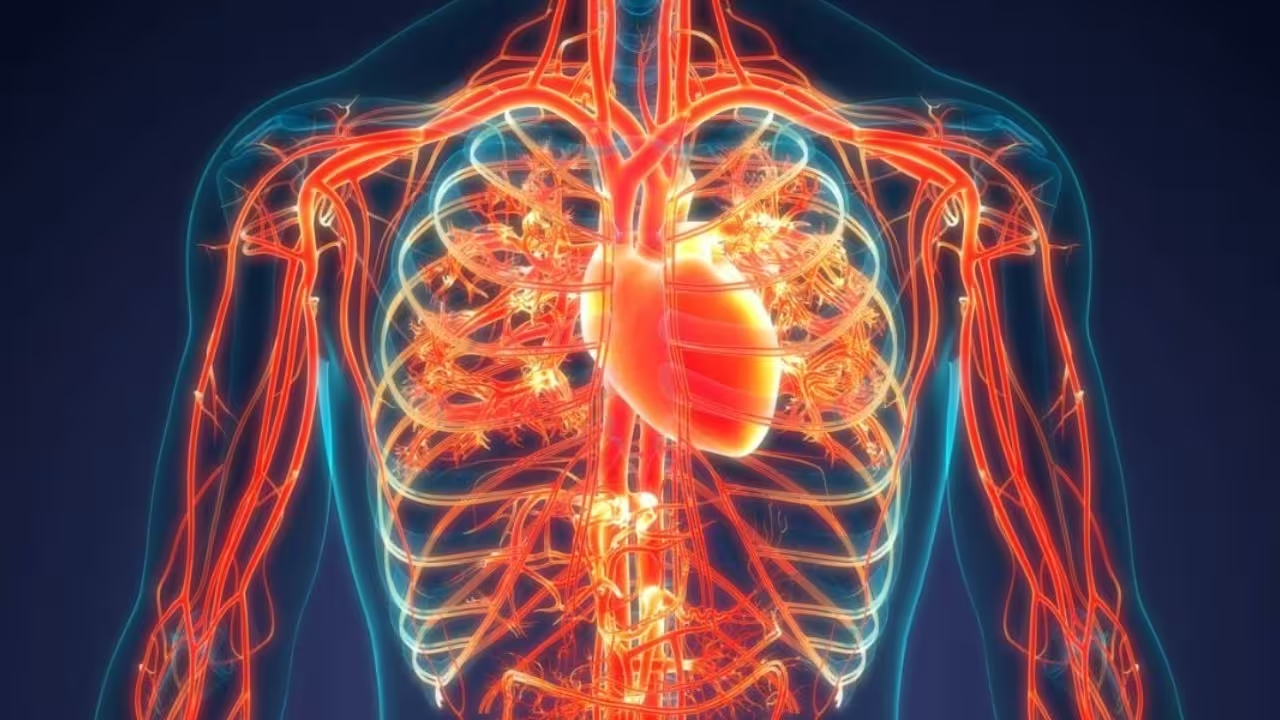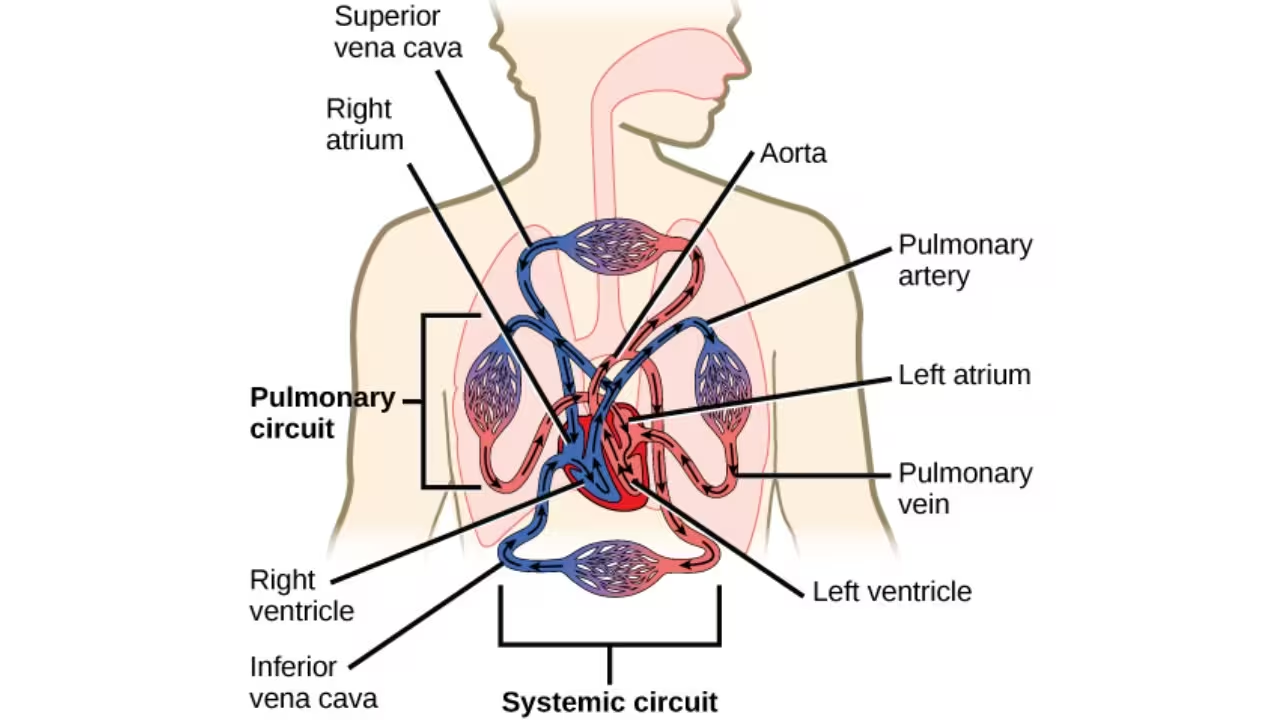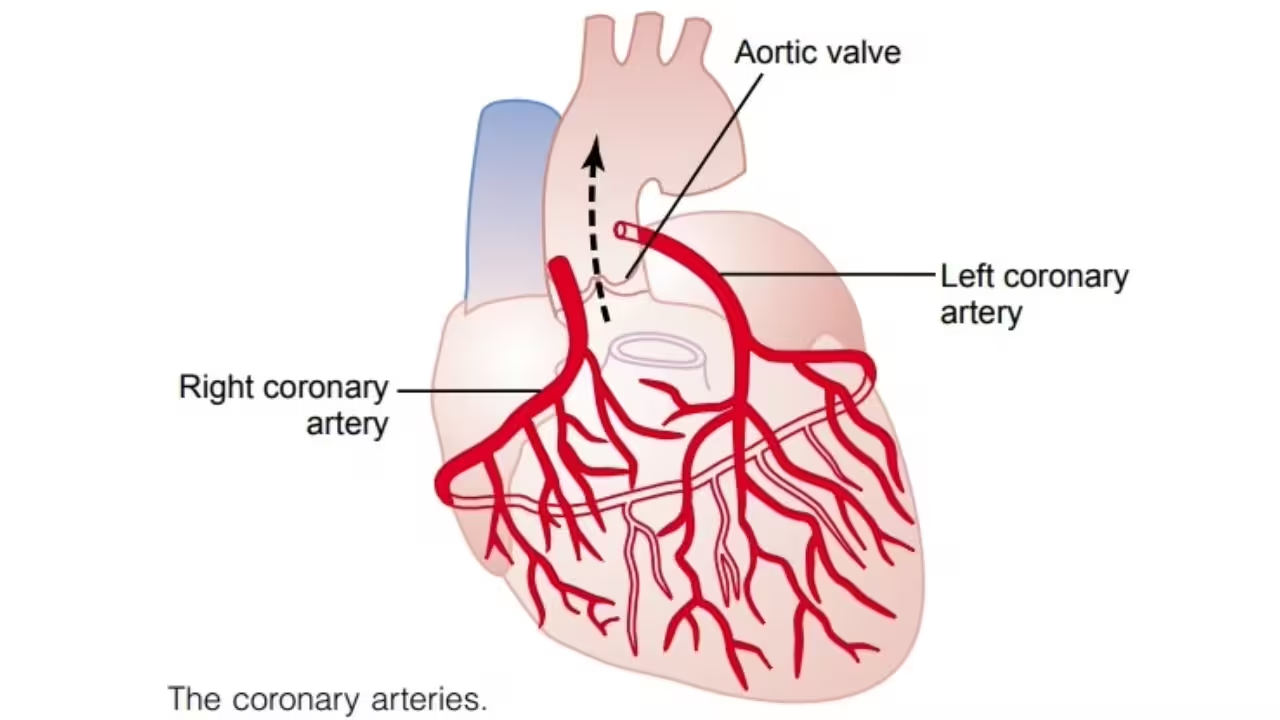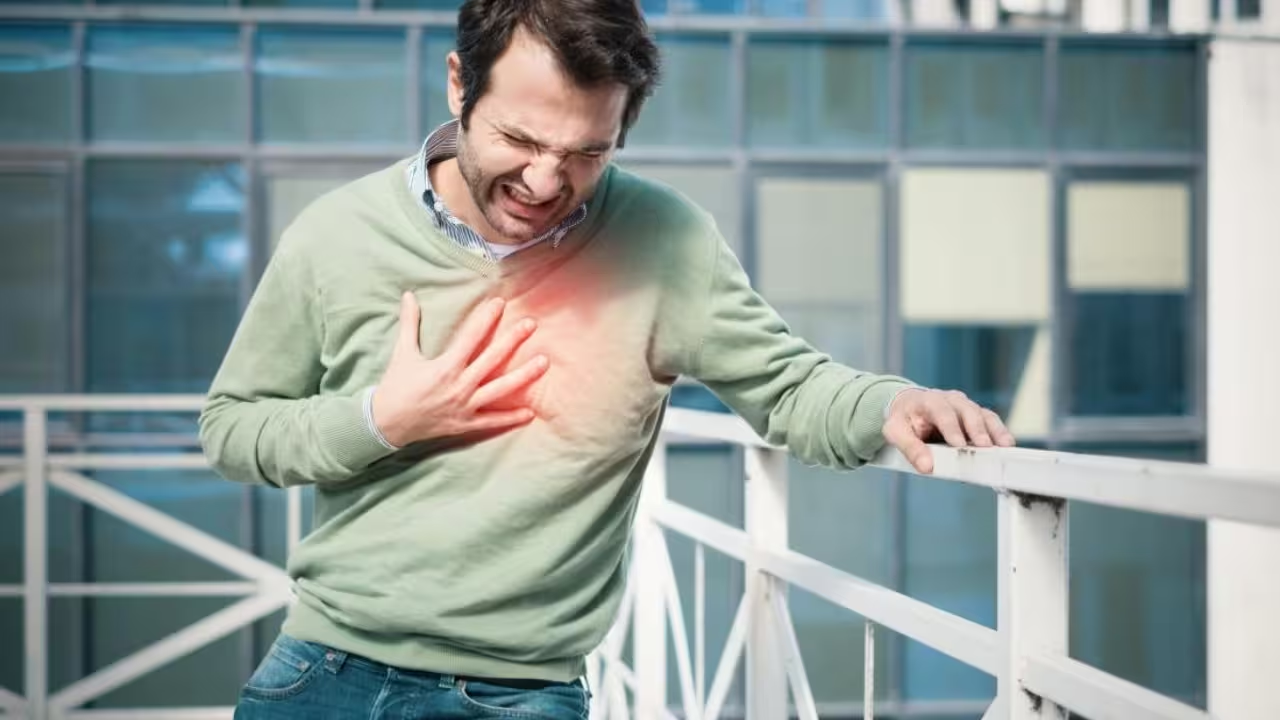
The circulatory system - sounds like something out of a textbook, right? But it’s literally the reason you’re breathing, thinking, walking. living. Also called the cardiovascular system, it keeps your blood and everything in it moving - delivering oxygen, food, hormones, and cleaning up waste like a pro.
This blog breaks down what the blood circulatory system actually does, how blood flows from the heart, what parts make it work, and what can go wrong if it breaks down. Whether you’re revising for exams or just want to finally understand that cardiac system diagram - this is your one-stop, student-friendly guide.
The blood circulatory system (or cardiovascular system) isn’t just about your heart beating or blood rushing around. It’s the body’s delivery and cleanup crew - constantly moving oxygen, nutrients, and waste to exactly where they need to go.

Here’s what makes up this system:
Humans have a double circulatory system, meaning blood passes through the heart twice in a full cycle. This gives your body a fresh supply of oxygen before sending it out again.
This two-part system - pulmonary cardiovascular system + systemic blood flow - helps maintain your energy levels, keeps organs working properly, and removes waste fast.
Reminder: Without proper blood flow from heart to body and back, nothing works smoothly - not your brain, muscles, or even your skin.
The blood cardiovascular system isn’t just about the heart - it’s a full team effort. Think of it like a delivery service: the heart is the pump, blood vessels are the roads, and blood is the delivery truck carrying oxygen, nutrients, hormones, and more.

At the center of the human cardiac system, the heart has four chambers - right atrium, right ventricle, left atrium, left ventricle. It contracts and relaxes rhythmically to keep the blood circulation in heart moving. Valves inside the heart make sure blood flows in only one direction (no U-turns allowed!).
This whole structure is what you’ll often see in a diagram of a circulatory system or cardiac blood flow diagram. It shows how everything’s connected - nothing random here.
Blood isn’t just red liquid - it’s a mix of:
Together, this trio keeps your human circulatory system balanced and running smoothly.
Humans have a double circulatory system, meaning blood travels in two main loops - one to the lungs and one to the rest of the body. This system keeps your body super efficient when it comes to oxygen and energy.


All three work together to make sure the blood cardiovascular system stays in motion, as seen in a typical human heart and blood circulation or cardiac blood flow diagram.
The circulatory system is way more than just “blood flowing through veins.” It’s like a life-support delivery network that works non-stop - making sure every cell gets what it needs and stays protected.

Here’s what it really does:
Every time you breathe or eat, the circulatory system picks up the good stuff (oxygen from lungs, nutrients from food) and delivers it straight to your cells. No delivery delays here.
Your cells work hard - and that means waste (like carbon dioxide). Blood collects this junk and sends it to your lungs, kidneys, or skin to be thrown out.
Ever notice your face gets red when you’re hot? That’s your blood helping you cool down. Same when you're cold - it helps trap heat. Basically, it’s your body’s personal thermostat.
Blood carries white blood cells that act like your internal army. Got a virus trying to mess things up? They’ll be on it.
When you get hurt, platelets in your blood rush to the spot and help form clots - like tiny band-aids - so you don’t bleed too much.
Hormones - your body's messengers (like adrenaline, insulin, etc). Blood helps them travel fast so your body can react or adjust quickly.
Even your brain and heart need constant oxygen. One pause, and things can get serious - which is why the system never sleeps.
Important Note: If any one of these functions slows down - like if your heart weakens or your blood vessels get blocked - it affects everything from energy to focus to immunity.
When your circulatory system is doing its job, you don’t really notice it. But the moment something’s off? Your whole body starts feeling it - fatigue, dizziness, swelling, or worse.

Let’s break down some common circulatory system disorders you really should know about:
It’s when your blood pushes too hard against artery walls. You don’t always feel it, but over time it can damage your heart, kidneys, and even lead to strokes. That’s why it’s called the “silent killer.”
Fat and cholesterol build up inside your arteries and make them narrower. This slows down your blood flow and can lead to major stuff like heart attacks or strokes if a blockage forms.
When blood flow to part of the heart gets completely blocked, that area starts dying. Sudden chest pain, breathlessness, or feeling dizzy? That’s an emergency.
Same idea, but in the brain. Either a clot or burst blood vessel cuts off oxygen. Signs? Numbness, trouble speaking, or one side of the face drooping.
Anemia happens when you don’t have enough red blood cells to carry oxygen. You’ll feel super tired, look pale, and maybe feel dizzy or out of breath often. Iron deficiency is a common reason.
Blood pools in your leg veins because valves aren’t working properly. It looks like bulging blue lines. Not dangerous in most cases, but they can hurt or get worse over time.
Most of these issues are linked to things like poor diet, no exercise, smoking, stress, and sometimes even family history. But catching them early makes a huge difference. Don’t wait for your body to crash before listening to it.
So your heart’s working 24/7, blood’s running around like a delivery guy with no break - the least we can do is help the system stay smooth. Good news? You don’t need fancy stuff. Just small changes that actually add up.

Here’s what your circulatory system loves:
Your blood needs motion to keep flowing right. Even a little bit of exercise gets your heart pumping stronger.
Try this:
What you eat literally becomes what your blood carries. Too much junk - clogged pipes (arteries), low energy, and heart overload.
Circulation-friendly foods:
Late-night scrolling? and, your heart hates that. Your circulatory system needs rest too.
Like good sleep =
Stress tightens your blood vessels and messes with circulation. also, smoking, alcohol, and junk bingeing? Major red flags for your arteries.
Simple de-stress hacks:
Some issues like high BP or cholesterol sneak in silently.
What to track once a year (or as needed):
Reminder: Your circulatory system is low-key your body’s delivery, drainage, and energy control system. If you take care of it now, it will literally keep you going strong for life.
